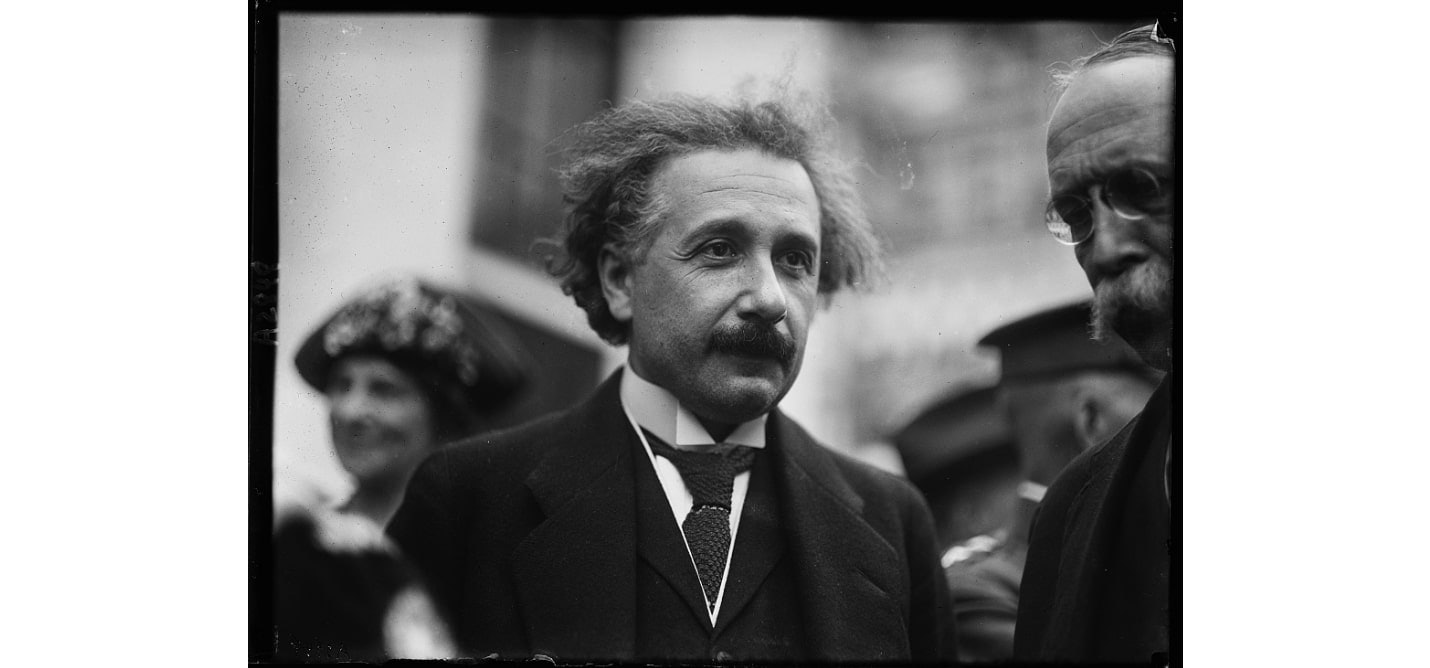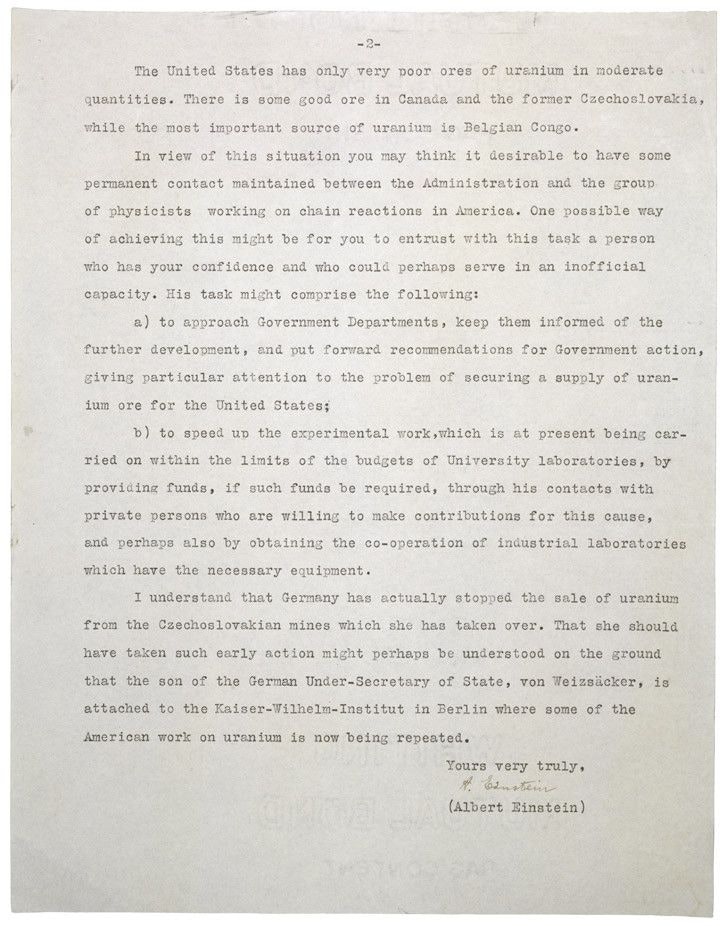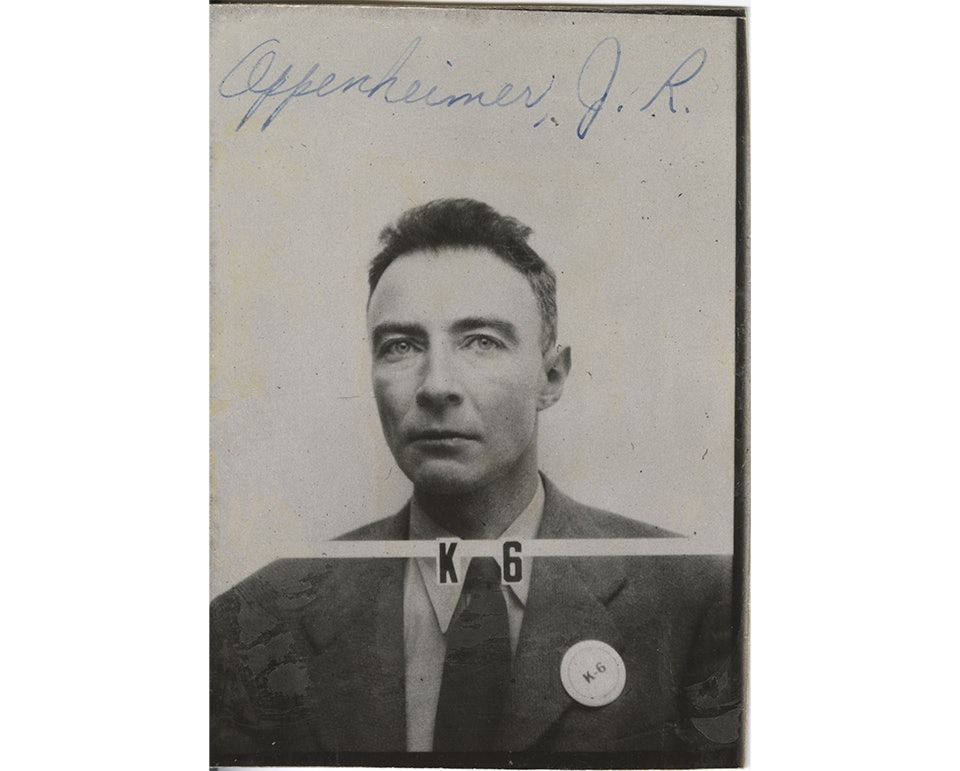
On August 2, 1939, German physicist Albert Einstein penned a letter to President Franklin D. Roosevelt. It was one month before Germany invaded Poland, and two years before the attack on Pearl Harbor.
This letter, mentioned in the newly released Christopher Nolan movie Oppenheimer, set off its own chain reaction that resulted in the Manhattan Project, which began in August 1942 and ended three years later with the devastating atomic bomb drops.
Einstein wrote to Roosevelt that “it may be possible to set up a nuclear chain reaction in a large mass of uranium, by which vast amounts of power and large quantities of new radium-like elements would be generated.” This achievement, which would almost certainly come about “in the immediate future,” could lead to the creation of “extremely powerful bombs.”
Einstein then urged the President to keep Government Departments abreast of further developments, especially about securing a supply of uranium ore for the U.S., and hasten experimental work. While the letter was written in August, it wouldn’t reach Roosevelt’s hands until October of that year.
“Immediately after getting the letter, [Roosevelt] put a scientific committee to work looking into the possibility of making use of atomic power in the war,” Jeffrey Urbin, an education specialist at the Roosevelt Presidential Library and Museum, writes to Inverse in an email. The weapons were coded “tube alloys” going forward.


Behind the Letter
Einstein mentions three other renowned physicists: Enrico Fermi, Leo Szilard, and Jean Frédéric Joliot. Each one independently contributed to the science behind the atomic bomb, building on decades of prior nuclear research that set the stage for this historic inflection point.
Hungarian-Jewish Szilard conceived of the nuclear chain reaction in 1933. In light of the neutron’s discovery by James Chadwick in 1932, Szilard contemplated that when an atom’s nucleus is split, vast energy stores are released, including neutrons that could instigate another split producing more neutrons, and so on, but he couldn’t procure research funding.
It wasn’t until December 1938, after Szilard had emigrated to America, that Otto Hahn and Fritz Strassman discovered fission in uranium, impelling him to conduct experiments on neutron emission in the fission process. In March 1939, during a three-month research tenure at Columbia University, he proved that for every neutron absorbed about two neutrons were released during fission. "That night," Szilard wrote, "there was very little doubt in my mind that the world was headed for grief."
All the while, Italian Fermi also investigated nuclear fission and chain reactions, also at Columbia. He had received the 1938 Nobel Prize in Physics for his work on neutron artificial radioactivity and nuclear reactions from slow neutrons. After the discovery of nuclear fission in December 1938, Fermi and his team probed chain reactions in uranium.
French Joliot conducted elaborate research on atomic structure with his wife, Iréne Joliot-Curie (daughter of Marie Curie, whom he assisted in the lab at age 25). Joliot and Curie jointly received the Nobel Prize in Chemistry in 1935 for their discovery of artificial radioactivity, which occurs when neutrons swarm stable isotopes.
As Einstein intimates, the methodology for building atomic bombs was all but set, and the Nazis had taken over the uranium ore mines in Czechoslovakia. Urbin also writes that Hitler and his regime would build a super weapon without a second thought. “It was imperative that the Allies prevent them from being the first to do so. Einstein understood as well as anyone given he had fled Germany.”
The question became: Who could build a bomb first?
Enter: Oppenheimer

Meanwhile, American theoretical physicist J. Robert Oppenheimer had been working in Ernest Lawrence’s Radiation Lab at the University of California, Berkeley since 1927. There, he developed a fast neutron theoretical physics in 1942. Later that year he began investigating bomb design and then combined the two disciplines with a fast neutron lab to develop an atomic weapon. In the fall of that year, General Leslie R. Groves asked the 38-year-old Oppenheimer to spearhead Project Y, at the secret Los Alamos Laboratory in rural New Mexico.
However, Oppenheimer hadn’t always been entrenched in nuclear warfare research. Before 1940, he had sunk his teeth into quantum field theory, astrophysics, black holes, and more. Berkeley also served as fertile ground for Oppenheimer’s stake in political activism. Partially because of Lawrence, he became interested in the physics of the atomic bomb in 1941. A brilliant physicist who received his Ph.D. at age 22, Oppenheimer proved a tireless researcher and “excellent director” of Los Alamos
In August 1939, Oppenheimer likely wasn’t even writing out equations for building an atomic bomb. Neither Einstein nor Roosevelt could’ve known at that point who he would become. Still, in retrospect, it seems almost inevitable that he became the momentous figure we know now.







